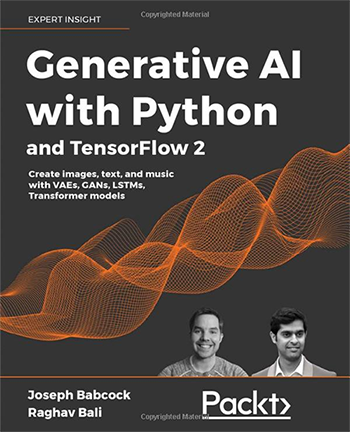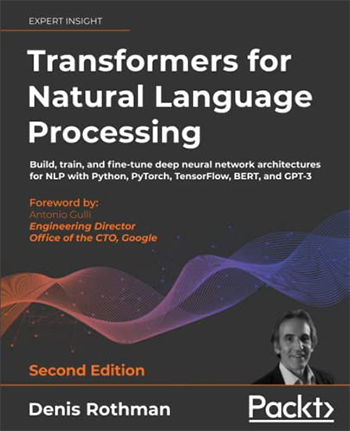
Source: Image generated by the author with generative AI.
TL;DR:
Generative AI and Discriminative AI are two different approaches to machine learning, with generative AI being used to create new content and discriminative AI being used for classification tasks. Companies like Cohere and OpenAI are leading the way in generative AI, using language models like Cohere’s NLP Platform and OpenAI’s GPT-3 to generate human-like text. Generative AI has a wide range of applications, including personalized education, automated content creation, and marketing. With the continued advancement of large language models, generative AI has the potential to transform industries and open up new possibilities for AI in the future.
*Disclaimer: This article uses* Cohere *for text generation.*
In the first post of my generative AI series, we take a non-technical look at what generative AI is and explore its exciting potential. Generative AI and discriminative AI are two distinct machine learning approaches, each with its unique applications. As AI technology advances with the help of machine learning, natural language processing, and software engineering, machines are becoming more sophisticated in their ability to perform tasks that were once deemed impossible. This is where generative AI comes into play, generating new data based on the patterns it has learned from existing data.
Generative AI models can understand the context of the input data, making them ideal for applications such as chatbots, automated content creation, and text-to-speech systems. Discriminative AI, on the other hand, is better suited for classification tasks, such as image or speech recognition. With the development of large language models, such as Cohere’s NLP Platform, generative AI has become more powerful, producing human-like text and enabling a wide range of possibilities. Cohere is one of the leading companies in generative AI, with its powerful language model capable of performing various natural language processing tasks, including text summarization, question answering, and language translation. In this post, we will explore the difference between generative AI and discriminative AI and delve into how Cohere is at the forefront of generative AI development.
Generative AI has a broad range of applications, including personalized education, automated content creation, and marketing. It’s even possible to generate creative writing using generative AI, with the help of language models. The potential for generative AI to transform industries is enormous, as it can create new content, increase efficiency, and enable more personalized experiences. As the field of generative AI advances, there are still many challenges to overcome, such as ethical considerations and potential misuse of the technology. In this series, we’ll be exploring the possibilities and limitations of generative AI, with the goal of gaining a deeper understanding of how this technology can be used to improve the world around us.
Generative AI vs. Discriminative AI
Generative AI and discriminative AI are two different approaches to machine learning, and they have unique applications. Discriminative AI focuses on finding a decision boundary that separates input data into different classes. For example, in image classification, a discriminative model would attempt to learn the boundary between different types of images, such as cats and dogs. In contrast, generative AI focuses on modeling the joint probability distribution of the input data and labels, which can be used to generate new data that is similar to the original data.
Generative AI models are capable of generating new content based on the patterns they have learned from existing data. These models are also capable of understanding the context of the input data, making them suitable for applications such as chatbots, automated content generation, and text-to-speech systems. Discriminative AI models, on the other hand, are better suited for classification tasks, such as image or speech recognition.
Generative AI Players
One of the companies that have been making significant strides in generative AI is Cohere. Cohere is aimed at language AI enthusiasts, developers keen for NLP, and MLE and data science teams that work with language AI. Cohere specializes in developing NLP technologies that enable machines to understand human language. Their flagship product, the Cohere NLP Platform, is a powerful language model that can perform a wide range of NLP tasks, including text summarization, question answering, and language translation. Cohere is quickly gaining traction in the generative AI space for its ability to generate complex and sophisticated text based on input data.
Another prominent player in the generative AI space, OpenAI, is a research organization focused on developing AI safely and beneficially. They are the creators of GPT-3, one of the most powerful and advanced language models available today. GPT-3 is capable of generating human-like text and has been used in various applications, including chatbots, automated content generation, and language translation. While Cohere and OpenAI both specialize in generative AI, Cohere’s emphasis on NLP technology and its ability to perform various NLP tasks makes it unique in the field. In this post, we’ve explored the difference between generative AI and discriminative AI, and how companies like Cohere and OpenAI are leading the way in generative AI development.
Generative AI Use Cases
Generative AI has a wide range of use cases, and its applications are only limited by the imagination. One of the most exciting applications of generative AI is in the field of creative writing. With the help of large language models, it is now possible to generate complex and engaging stories that are indistinguishable from those written by humans. This has implications for the entertainment industry, where generative AI can be used to create new content and expand the reach of existing franchises.
Another use case for generative AI is in the field of education. Language models can be used to generate interactive and personalized educational content, making learning more engaging and accessible for students of all ages. For example, a language model could generate a story based on a student’s interests, making the learning experience more engaging and enjoyable. It can also be used to generate automated feedback on assignments, saving teachers a lot of time and providing more personalized feedback to students.
In the field of marketing, generative AI can be used to create personalized content for customers based on their preferences and interests. This can be useful for companies that want to create personalized marketing campaigns without spending a lot of time and resources on content creation.
Final Thoughts
We learned that generative AI and discriminative AI are two distinct approaches to machine learning, with their own unique applications and challenges. While companies in the language AI space are making significant strides in generative AI, the future of AI is likely to see many more exciting developments in this field. It will be interesting to see how these advancements will continue to shape and transform the world around us. Level up your generative AI skills with Cohere and start building the future today!
Resource recommendations to get started with generative AI:
Generative AI Tutorials, Guides, and Demos

Generative AI with Python and Tensorflow 2

Transformers for Natural Language Processing

Exploring GPT-3

Join me on this incredible generative AI journey and be a part of the revolution. Follow me on Twitter and LinkedIn for exciting content on generative AI. Buy me a coffee. Check out Generative AI Lab for some experiments.